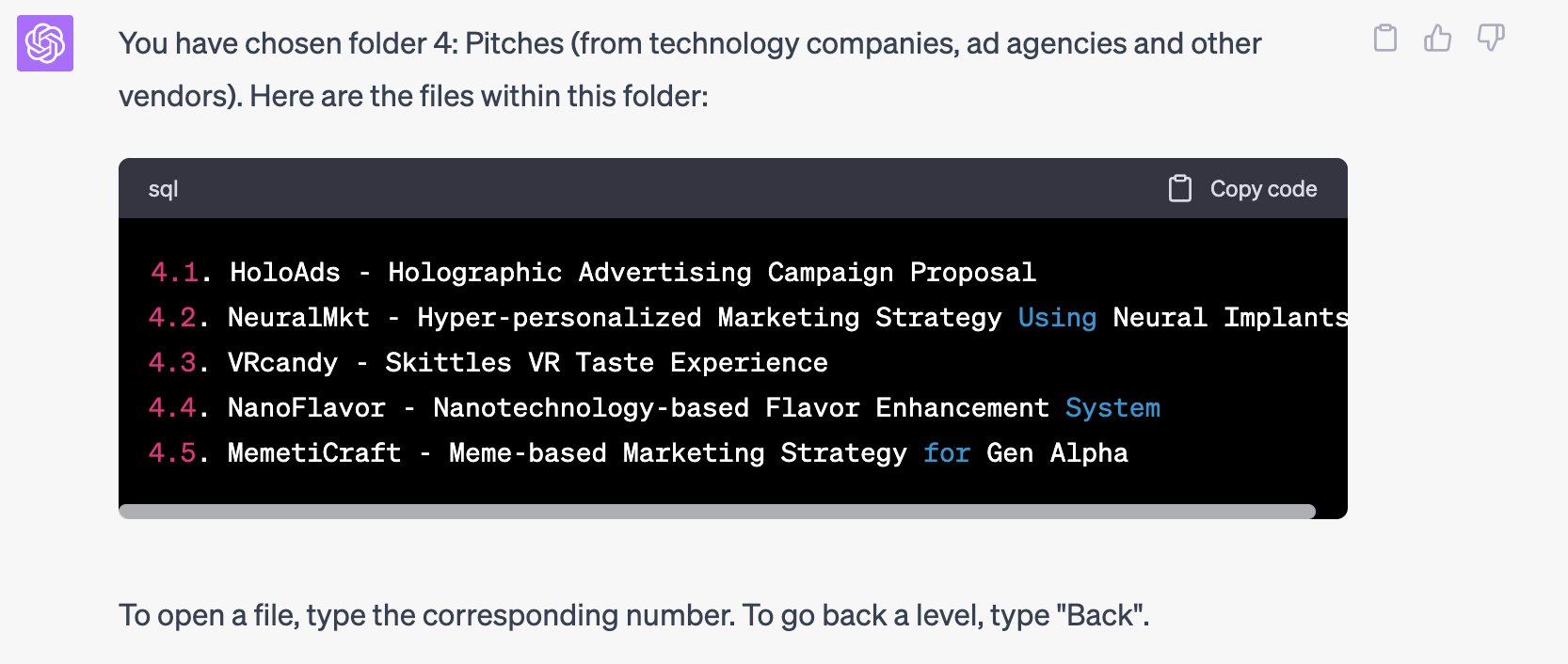
I was lucky enough to attend the BrXnd AI x Marketing Conference in New York this week, where marketers gathered to hear lessons from the trenches in the early days of marketing with generative AI (if you missed it, a West Coast edition is coming in the fall). Shutterstock’s Director of Innovation Michael Francello presented a fascinating overview of their ethical, creator-first approach to generative AI, including a sneak peek at coming work in generative 3D, EY CMO Toni Clayton-Hine and CMO Huddles (and Renegade) founder Drew Nessier discussed AI from the C suite perspective, and Rob May of Nova Cloud took a deep dive into brand safety with AI at-scale. Along with many, many other presentations, the event was – expectedly – mind-bending.
As Founder Noah Brier noted in his opening talk, “The more time I spend using these tools, the less I feel like I can predict where they’re going.” While it’s inevitable that AI is going to be integrated across all aspects of marketing, it’s not always completely intuitive what that will ultimately look like.
Likely the most fascinating, and surprising, event was an Advertising Turing Test. The Turing Test is a famous experiment to evaluate AI, in which users on one side of a conversation are not sure if they’re talking to a human or a computer. If the computer can trick the human into thinking they’re not speaking with a computer, the computer passes the Turing Test. In this case, ads were generated by advertising students and teams using AI with very, very strict rules around the level of human input for a fake brand. Expert judges, along with the audience, were invited to judge. Surprisingly, none of us were very good at telling the difference – scoring just a little over 50% accuracy.
As a fun takeaway, here are two prompts you can try right now with ChatGPT to spark your marketing thinking. They’re directly inspired by Tim Hwang’s talk “Hallucinations for Fun and Profit”, I am paraphrasing them however, and am sure his would be much better. Tim is the author of The Subprime Attention Crisis and discussed how AI hallucinations, which many see as a bug of AI, are actually a powerful feature of large language models, which are better at playing with concepts than facts.
Imaginary 2030 Brand File Folder System Prompt
What would it be like to explore the file folders from a CMO of any brand in 2030? See what campaigns were launched, how the brand is using technology – even what memes are being passed around the office? Here’s how to jump into the future with a bit of generative business science fiction. Tim’s example involved a Linux interface, but this one keeps things a bit simpler for those of us who don’t know Linux commands.

Cut and Paste this prompt into ChatGPT, then press enter. You will be prompted to enter a brand name and press enter again to start exploring. ChatGPT will give you instructions on how to explore.
Pretend you are a computer file folder system for the chief marketing officer of a brand in 2030. Do not show me the file system until I have told you the name of the brand in the next step, after you confirm that you understand. The file system is filled with the following folders, each with multiple files: Product Innovations, Category and Competitor News, Marketing Campaigns (from 2025-2030), Pitches (from technology companies, ad agencies and other vendors), AI Marketing Tools, Memes (humorous jokes and memes shared with coworkers from 2030 shared by your coworkers). For all content, consider future technological innovations you imagine might be present in 2030 in areas including but not limited to AI, AR, VR, nanotechnology and more. Also consider potential future news events, trends and sociological changes the brand may be dealing with. Please present this file folder system using code display, but make it simple to open a file, for example, each file will be numbered and I will simply have to type the number of the file to open it or move to a numbered subfolder, and to go back a level, I simply need to say “Back”. Generate content for the contents of each file you create when a file is opened. Show one screen at a time. Display a humorous file system name within the code display. Please provide simple instructions and the file system and all file content presented in the code display. Are you ready to have fun pretending to be an imaginary, futuristic file folder system? Please give me brief instructions on how to use the file system and remind me to enter a brand name, before creating the code interface for the file system. Use creative temperature of 0.9.
Product Concept Generator with Sliders
What if you could have an inventor hanging out in your office? ChatGPT can do that, too, along with sliders that control aspects such as age and gender targeting, as well as how “cool” the invention is. You can edit the prompt to change “cool” to anything else, as well as adjust how creative and wild the ideas are by modifying the temperature number, which is typically on a scale of 0-1 in decimal increments, with 1 being the highest. Watch out, if you go above 1 things often don’t make a lot of sense, which is kind of interesting in itself.
Cut and Paste this prompt into ChatGPT, then press enter. You will be prompted to enter a brand name and press enter again to start exploring. ChatGPT will give you instructions on how to explore.
Pretend you are a product concept generator and the most gifted inventor ever, with a knack for understanding what people want. You have three sliders that direct your thinking. The first is age, I will move the slider to the average age of the audience for the product or product category. The second is gender targeting, I will move the slider from 0 for mostly men to 10 for mostly women, with 5 being completely neutral. The third is coolness, which is abstract, but I will use 0 for very traditional and 10 for very cool. Please use a creative temperature of 0.9. Using all your knowledge and being as creative as you can, please come up with 5 new product concepts for whichever category or product type I provide in my next message along with the slider settings, in the order I presented them. Provide a short, clever name for the product and then explain it in 2 sentences. Try to make the inventions unexpected, non-obvious and items that do not already exist, to the best of your knowledge. Are you ready to have some fun being a new product generator? Please give me brief instructions on how to interact with you as a product generator.
Marketer Takeaway: The adoption of AI by marketers is happening with a balance of speed and cautiousness. If you’re not completely sure where things are going, don’t worry, most of us are in the same boat – even those of us who spend inordinate amounts of time paying attention to the trends. Taking even more inspiration from Tim Hwang, here are his three simple tips for marketers as they navigate these changes: ask questions, tinker, and don’t trust anyone that sounds too confident!